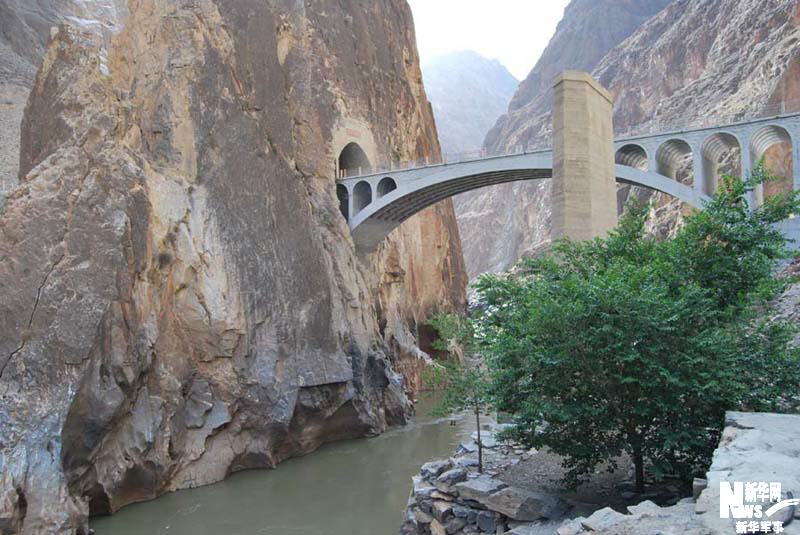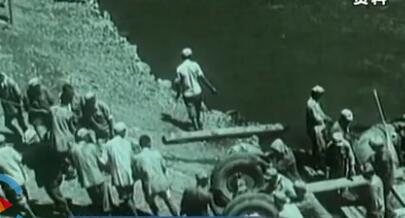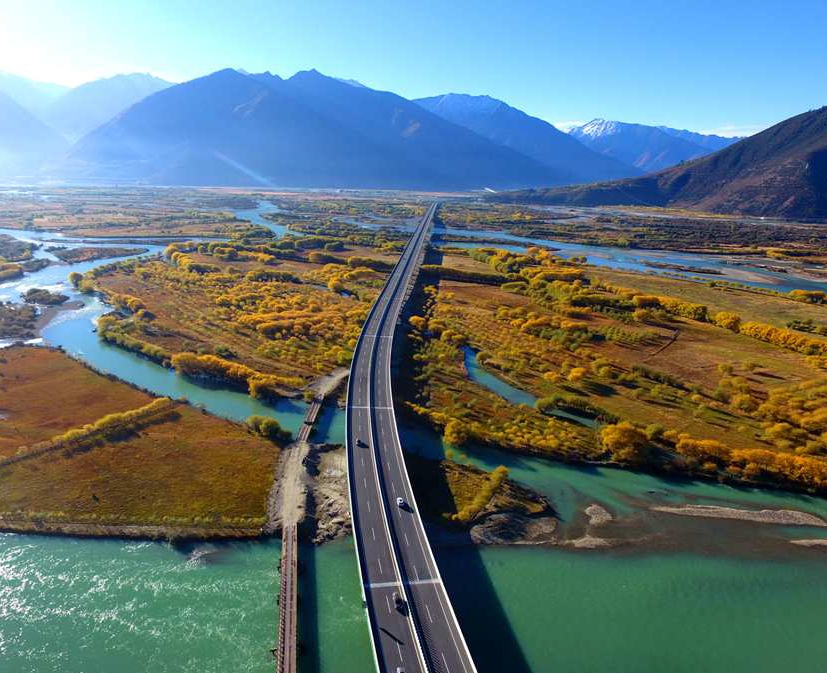The roads connecting Tibet to the world
Early April is when the Chinese pay respects to their deceased ancestors, it is also a time when the Chinese memorialize their heroes.
In southwest China's Tibet, there were a group of construction workers who worked hard to build a road in 1950 with basic tools like hammers, steel chisels, and shovels. This highway is a miracle in the world's history of road construction, and it has brought happiness and a brighter future for people in Tbet.

The Nujiang River Bridge and the old bridge pier.
Every Qingming Festival or Tomb Sweeping Day, local residents would tie white hada scarves on Nujiang River Bridge in Basu County of Chamdo, Tibet, in order to remember the heroes who built this bridge.
First-time visitors to the bridge would notice an old bridge pier. Locals say that this was where one soldier working on the road fell in while pouring concrete.
While infrastructure has advanced in Tibet and many new bridges are built, people have preserved this bridge pier to remember this soldier. It is said there was one hero sacrificed for every kilometer of road built on the way into Tibet.

Picture of road construction in the 1950s.
Weise, who was only 12-years-old at the time, still remembers the awe-inspiring sights of soldiers scaling the cliffs in order to build the roads. His father was a translator for the 18th Army of the Chinese People's Liberation Army. There was not a single highway into Tibet at the time. The soldiers of the 18th Army only had hammers, chisels, and shovels to conquer steep obstacles like 5000-meter-tall mountains and surging rivers.
In 1954, the 2000-meter-plus Sichuan-Tibet Highway was completed after four years' building, achieving a miracle in modern highway construction.
Weise grew up next to this highway which leads into Tibet. His father was also among the first generation of road maintenance workers. Weise is very attached to this highway, and he has opened a restaurant while bearing witness to the changes along the road.
The development of Tibet would not have been possible without its highways, and an expansive transportation network has also been established in Tibet, adding more vitality to the growth of Tibet.
Your Comment
Name E-mailRelated News
-
;
-
-

-
Tibet constructs 24,000 km of sealed roads from 2012 to 2017
More than 24,300 km of roads were constructed in southwest China's Tibet Autonomous Region from 2012 to 2017, according to local authorities.
-
-
-

-
New roads make a more dynamic Tibet
Local transport authorities in southwest China's Tibet Autonomous Region said a total of 24,306 kilometers of roads had been added to the region over the past five years.
-
Based in Lhasa, Tibet Vista is a Tibet travel agency that specialized in Tibet permit, and Tibet tours for both private and group travelers at a local price!
•4 Days Lhasa City Group Tour from USD 460 •8 Days Everest Base Camp Group Tour from USD 850 •15 Days Mt.Kailash Group Tour from USD 1780 •2016 Tibet Train Tours from Beijing, Shanghai, Chengdu, Xining,etc










